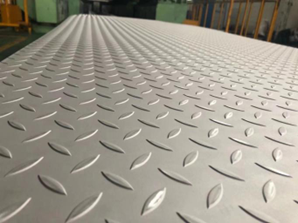Stainless steel checker plate is widely used in various industries due to its durability, corrosion resistance, and non-slip properties. Measuring the thickness of stainless steel checker plate accurately is crucial for ensuring it meets the required specifications for your project. Stainless steel checker plate suppliers guide people through the process of measuring the thickness of stainless steel checker plate, ensuring that have the right tools and techniques.
Introduction to Stainless Steel Checker Plate
Stainless steel checker plate, also known as diamond plate or tread plate, is a type of metal with a raised diamond or linear pattern on one side, making it ideal for slip-resistant flooring. The thickness of the checker plate plays a significant role in its performance and durability.
Tools Required for Measuring Stainless Steel Checker Plate Thickness
To measure the thickness of stainless steel checker plate accurately, you need specific tools designed for precision. Here are the primary tools you’ll need:
- Calipers: Digital or Vernier calipers are ideal for measuring thickness due to their precision.
- Micrometer: A micrometer provides even greater accuracy and is useful for very thin plates.
- Thickness Gauge: Specifically designed for measuring metal thickness, these gauges can be very convenient.
Steps to Measure the Thickness of Stainless Steel Checker Plate
Step 1: Prepare the Plate Surface
Before measuring, ensure the stainless steel checker plate is clean and free of any debris or coatings that could affect the measurement. This ensures you get an accurate reading of the metal itself.
Step 2: Use Calipers for Initial Measurement
Open the calipers and place them on a flat section of the checker plate, avoiding the raised pattern. Gently close the calipers until they touch both sides of the plate. Note the reading on the calipers.
Step 3: Confirm Measurement with a Micrometer
For a more precise measurement, use a micrometer. Place the micrometer around the edge of the checker plate and slowly tighten it until it just touches the metal. Record the reading.
Step 4: Use a Thickness Gauge
If available, a thickness gauge can be used to cross-verify the measurements. This tool is particularly useful for large plates where calipers or micrometers might be cumbersome to use.
Step 5: Average Multiple Readings
To ensure accuracy, take multiple readings at different points across the checker plate. The raised patterns can sometimes cause variations, so averaging several measurements can give a more accurate result.
Importance of Accurate Thickness Measurement
Accurately measuring the thickness of stainless steel checker plate is essential for several reasons:
- Structural Integrity: Ensuring the plate meets the required thickness helps maintain the structural integrity of the application.
- Safety: Proper thickness ensures the checker plate provides adequate slip resistance and load-bearing capacity.
- Compliance: Meeting industry standards and specifications is crucial for project approval and long-term performance.
Common Applications of Stainless Steel Checker Plate
Stainless steel checker plate is used in various applications due to its robust properties. Some common uses include:
- Industrial Flooring: Provides a durable and non-slip surface in factories and workshops.
- Transportation: Used in truck beds, trailers, and ramps for its durability and slip resistance.
- Architectural Design: Adds an industrial aesthetic to buildings and interiors while providing practical benefits.
Conclusion
Measuring the thickness of stainless steel checker plate is a straightforward process that requires the right tools and techniques. By following the steps outlined above and using calipers, micrometers, and thickness gauges, you can ensure accurate measurements. This precision is vital for maintaining the safety, compliance, and performance of your projects.



